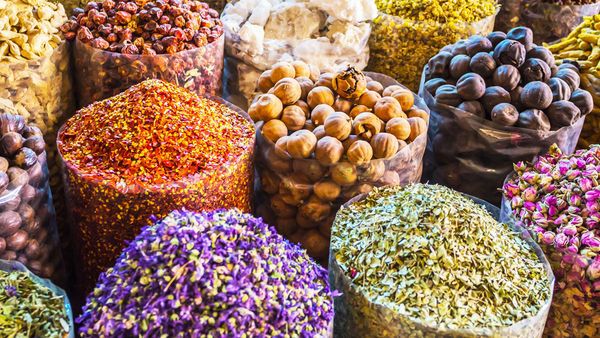

Shea butter
People in Africa have been using shea butter as an edible fat for thousands of years. The vegetable fat is obtained from the fatty nuts of the shea tree, also known as the shea tree ¹. This precious raw material is also contained in many cosmetic products as a skin-smoothing and moisture-binding base substance. As a skin care product, it protects the skin in cold winds, has an anti-inflammatory effect due to its allantoin content and can therefore be used for rheumatism or muscle and joint complaints ² ,³.
Shea butter has also regained importance in Germany in recent years. It is added to many products in the food industry and is popular in the cosmetics industry because of its skin-caring and smoothing properties. This cosmetic ingredient is particularly suitable for dry and chapped skin due to its lipid-replenishing and moisture-binding effect.
What is in shea butter
Shea butter consists of 50 percent fat, including a high proportion of unsaponifiable fats, which is why shea butter remains on the skin for a long time, protecting and softening it. In addition, native shea butter has a high content of phytosterols, wax esters, tocopherols, catechins and gallic acid.
Various studies have shown that shea butter has a skin-smoothing effect and protects the skin well against dehydration. It also strengthens the lipid barrier of the horny layer and is therefore very suitable for the treatment of dry and barrier-damaged skin ⁴. It is also considered to be very well tolerated by irritated or stressed skin.
- Alander, J (2009): Shea butter with improved moisturization properties. Personal Care
- Honfo, FG, Akissoe, N, Linnemann, AR, Soumanou, M, Van Boekel, MA (2014): Nutritional composition of shea products and chemical properties of shea butter: a review. Crit Rev Food Sci Nutr. 54 (5): 673-86
- Verma, N, Chakrabarti, R, Das, Rh, Gautam, HK (2012): Anti-inflammatory effects of shea butter through inhibition of iNOS, COX-2, and cytokines via the NF-KB pathway in LPS activated J774 macrophage cells. J Complement Intergr Med. 10.1515, 1553-3840. 1574
- Lodén, M, Andersson AC (1996): Effect of topically applied lipids on surfactant-irritated skin. Br J Dermatol. 134 (2), 215-20
This might also interest you:

Les ingrédients végétaux sont à la base de tous les produits Kneipp.

Acheter et produire : utilisation durable des matières premières et des ressources

L'huile d'onagre est particulièrement adaptée aux soins des peaux sèches. Pourquoi ?

Ils soutiennent la barrière cutanée - mais que sont les phytostérols au juste ?